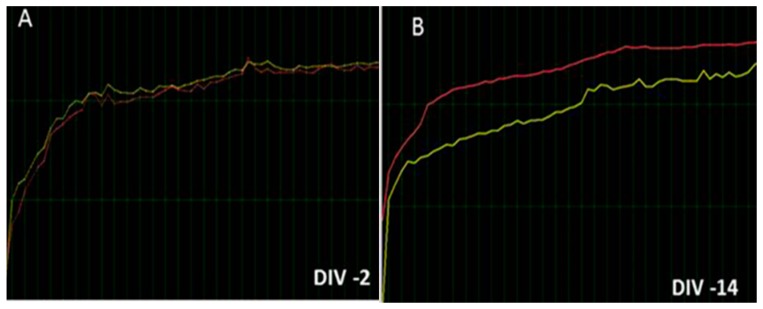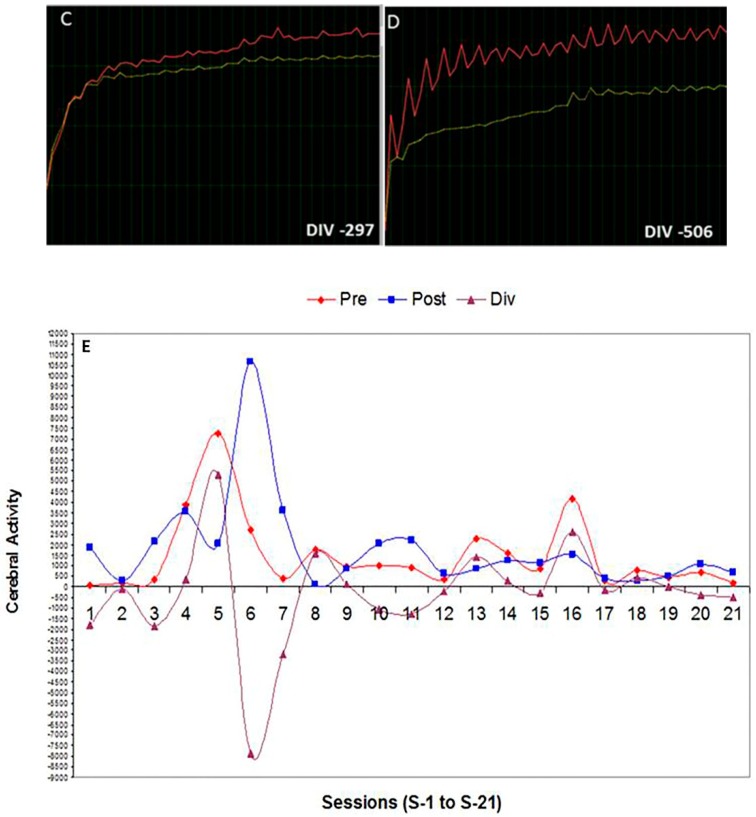Figure 2.
(a,b). Representative examples of cerebral activities (DIV) in bruxistic patients at pre-training (PRE: yellow) and post-training (POST: Red color) after 21 NO training sessions. (a,c) indicate representative cerebral activity levels (total divergences) in bruxistic patients with high “intrinsic stress”. The intrinsic stress is the experienced (perceived) stress by patients. Figure 2c shows DIV in these bruxistic patients after Origanum majorana exposure during 21 NO sessions (Figure 2c); note the lowest divergence values are seen in Figure 2 (c,d) (DIV: −297, −506); The Figure 2 (a,b) shows divergences close to zero (DIV: −2, −14 DIV), which means cerebral activity at pre-training stage (PRE: yellow) were close to post-training values (POST: red). These divergences (DIV) can be positive or negative depending on whether cerebral activity at pre-training was higher or lower than in the post-training level (POST, Figure 2e). DIV is the difference for cerebral activity in the PRE-training minus post-training and is considered an index of “brain efficacy” by NO training; thus, it reflected the efficacy of “brain regulation” after several NO training sessions. A negative DIV or one close to zero suggests a better cerebral state. Figure 2 (e) Divergences (DIV) fluctuate during 21 training sessions in bruxistic patient who have “high intrinsic stress” at post-training (POST: blue line), the pre-training values are shown in red (PRE: red line) and the difference (purple) represents divergence (DIV) parameter, which fluctuates reaching positive or negative values depending on whether cerebral activity found at pre-training was higher or not than the post-training values (POST).


